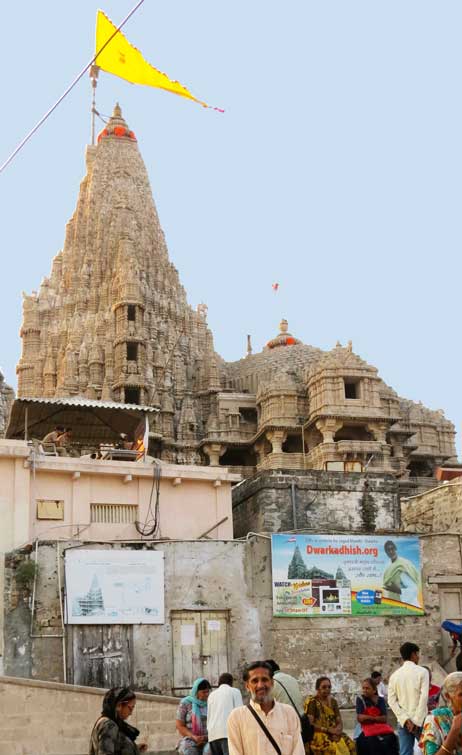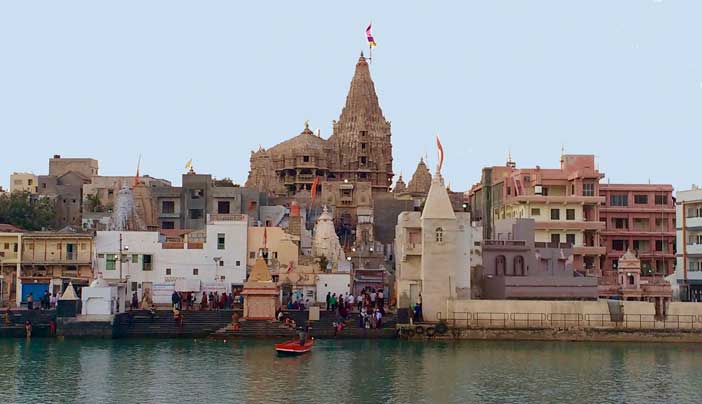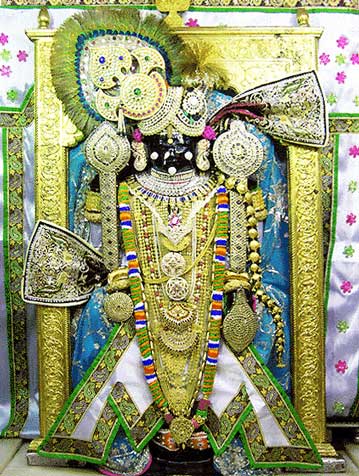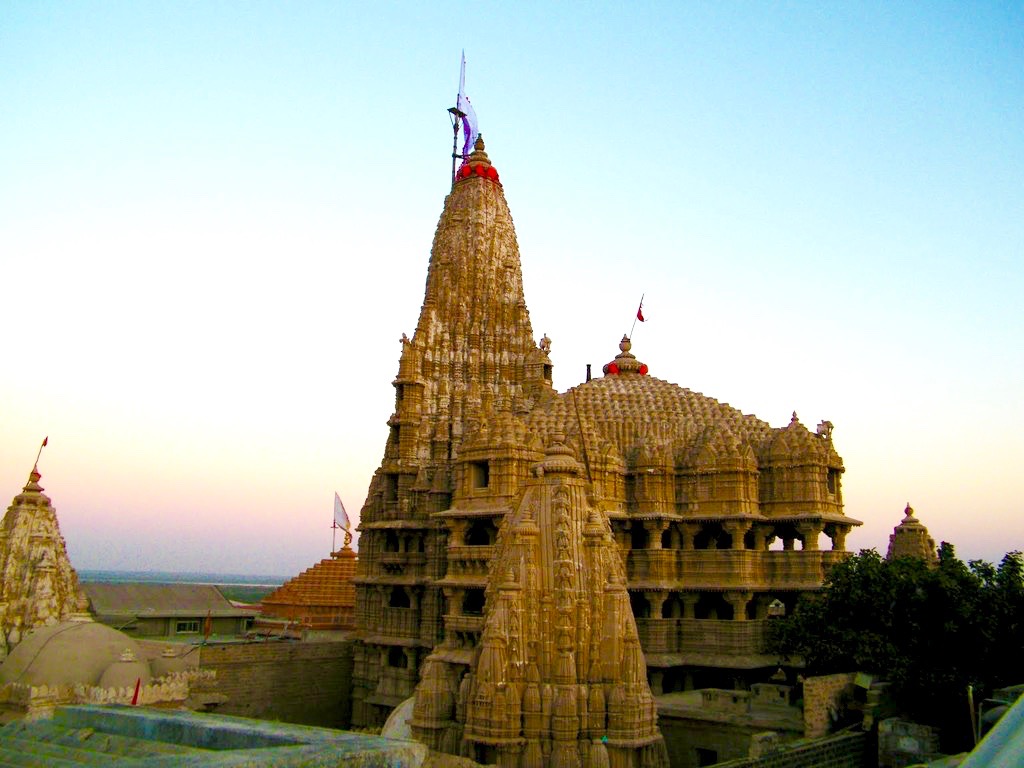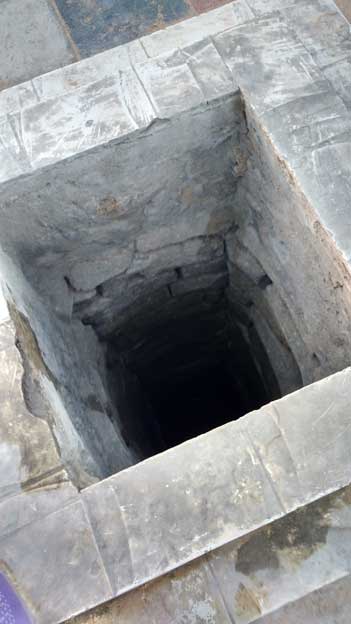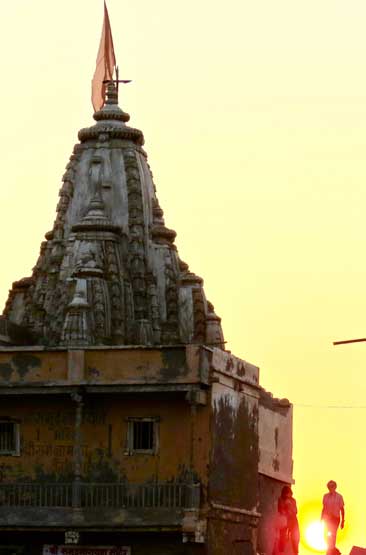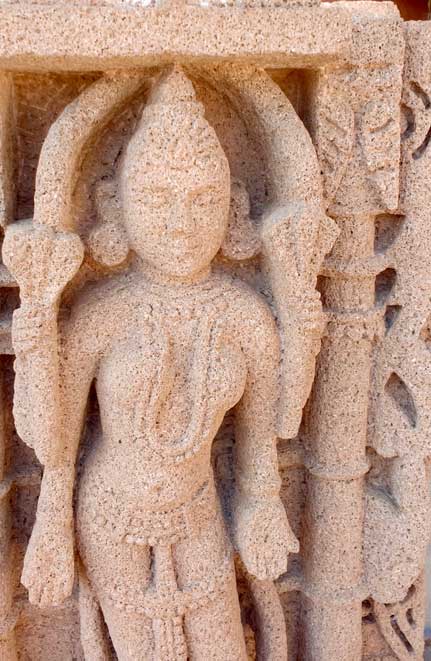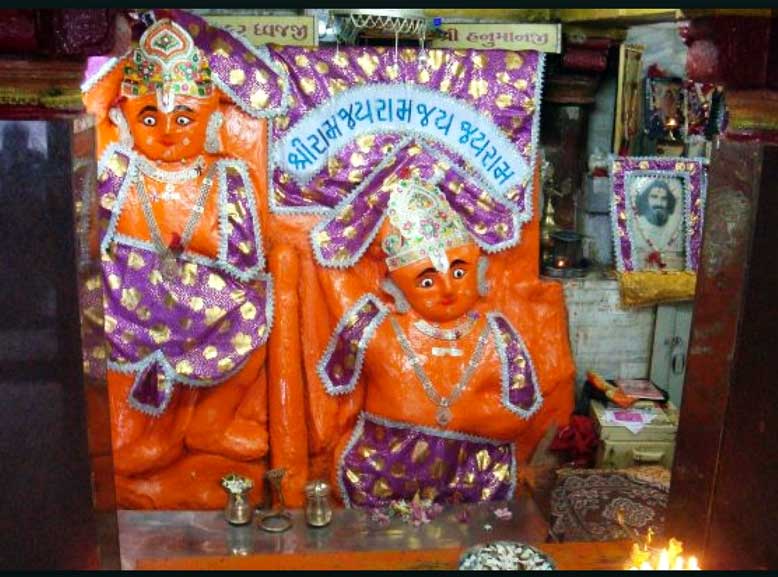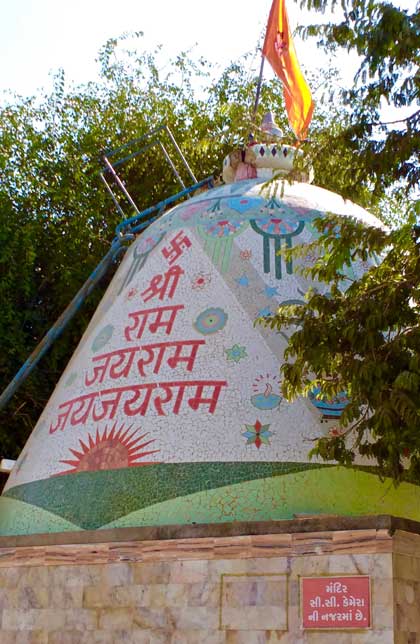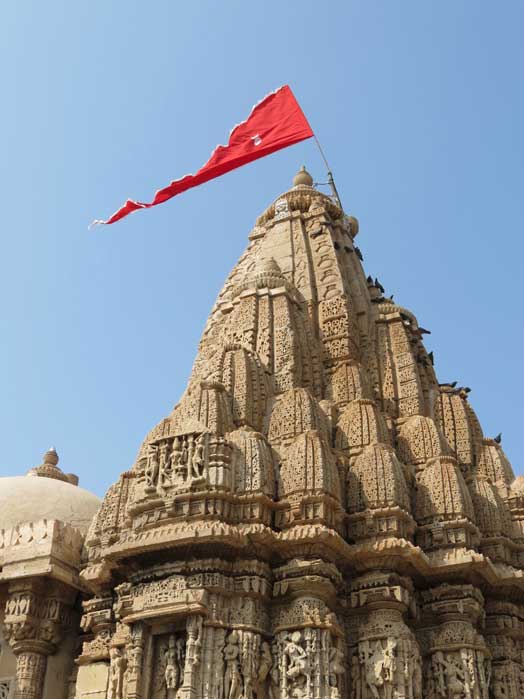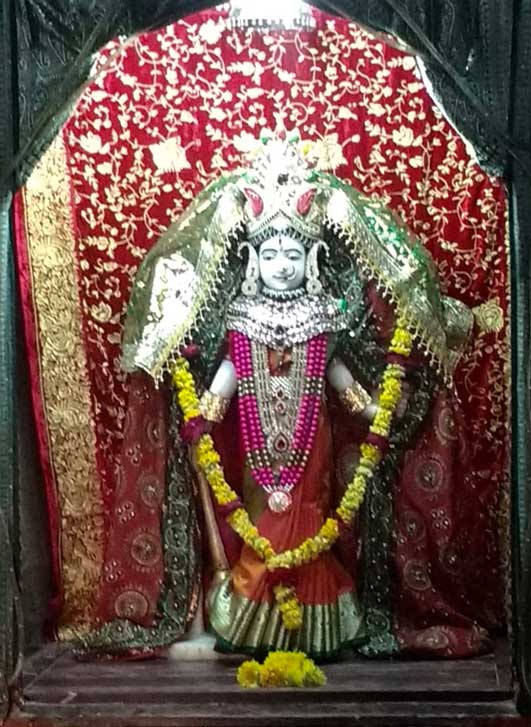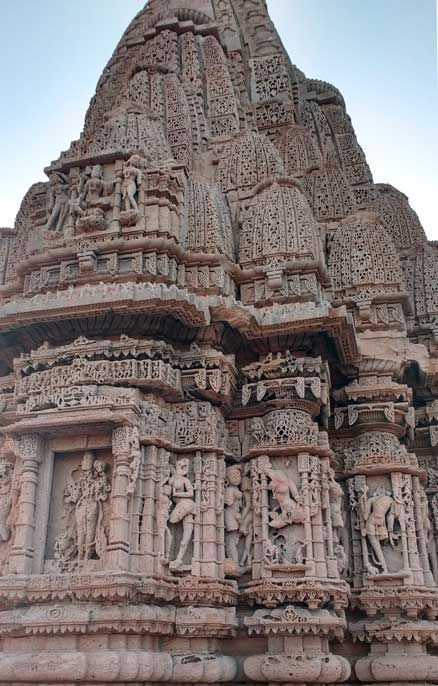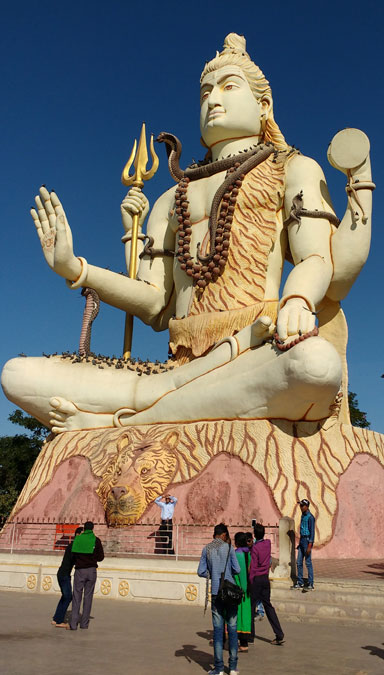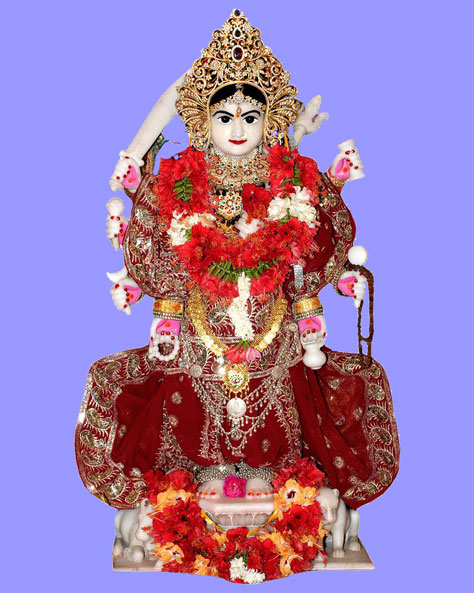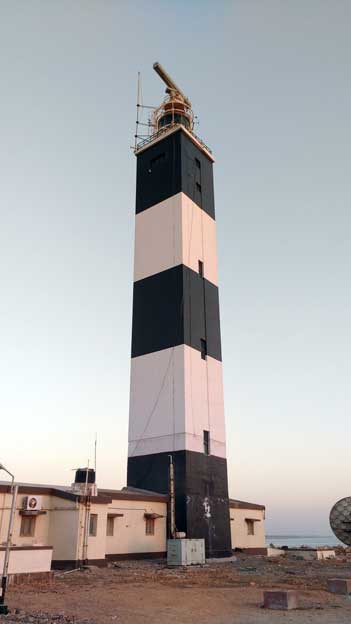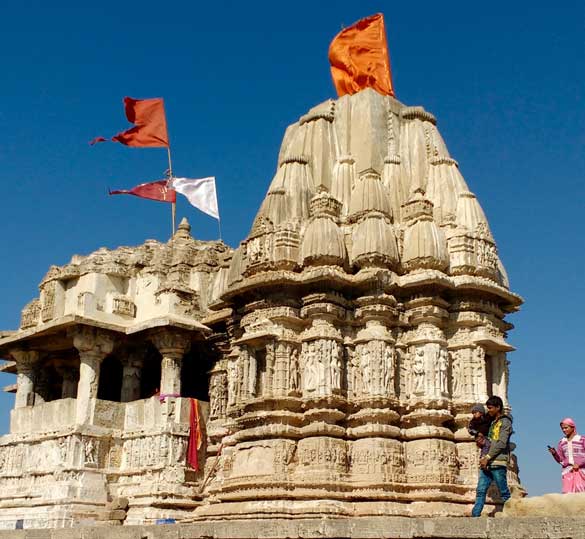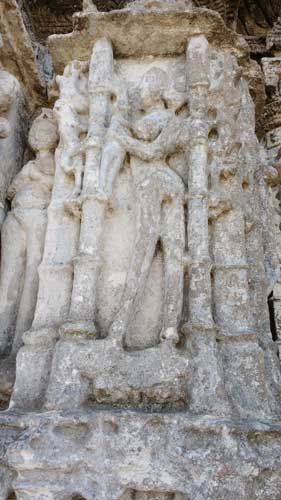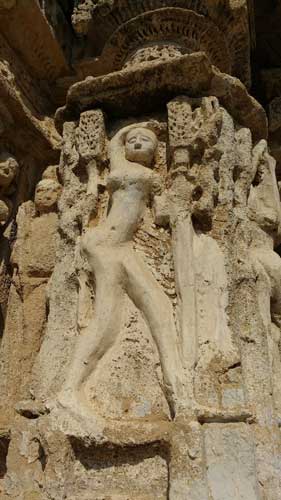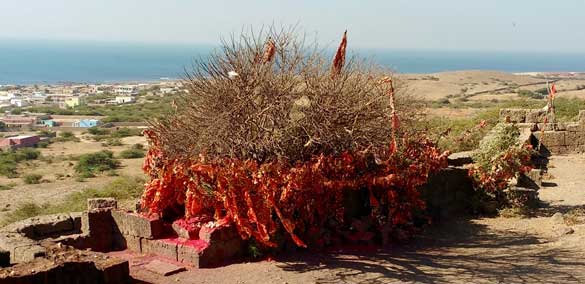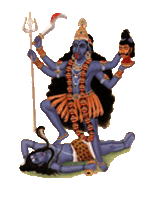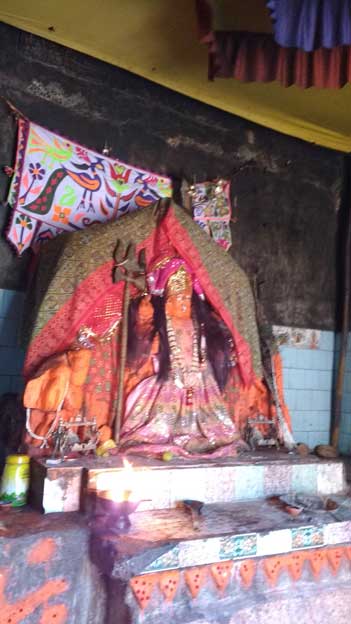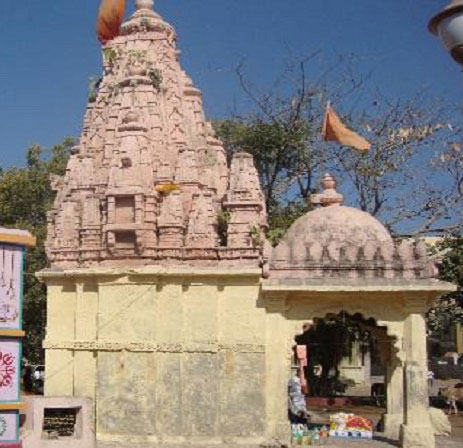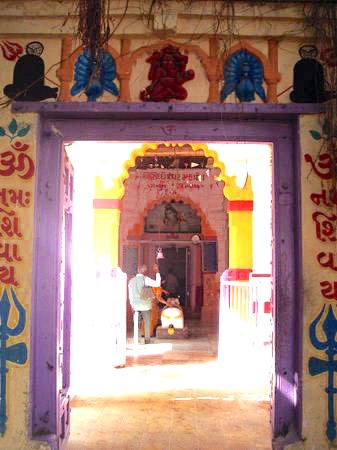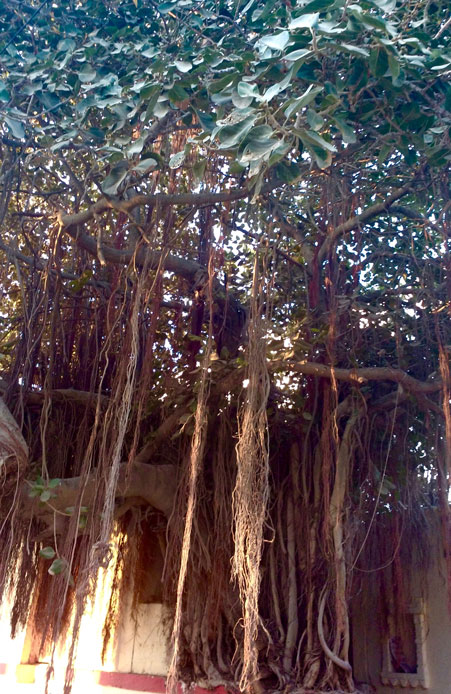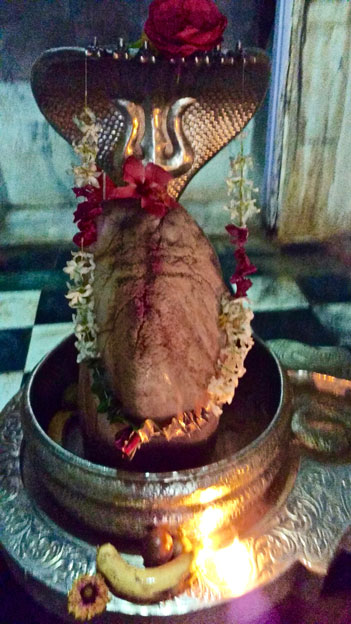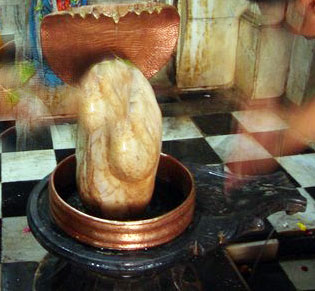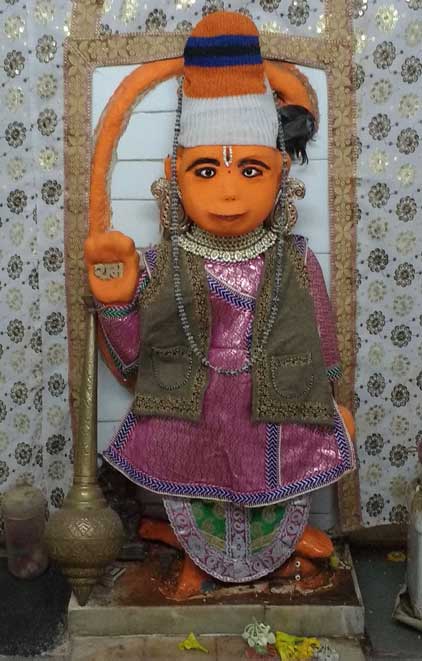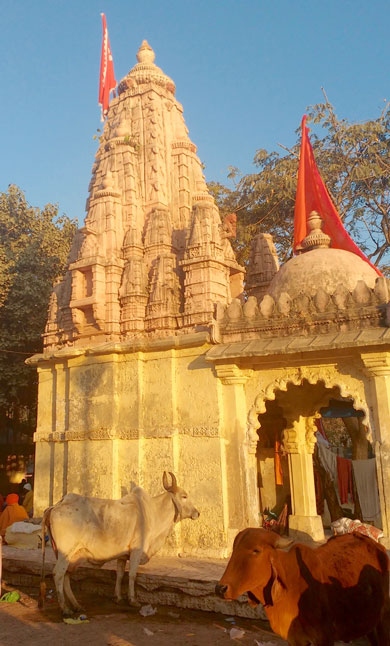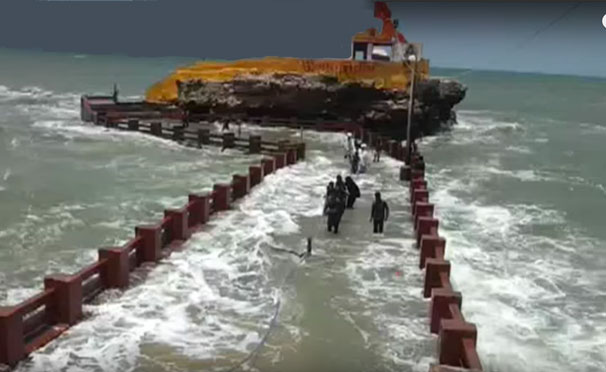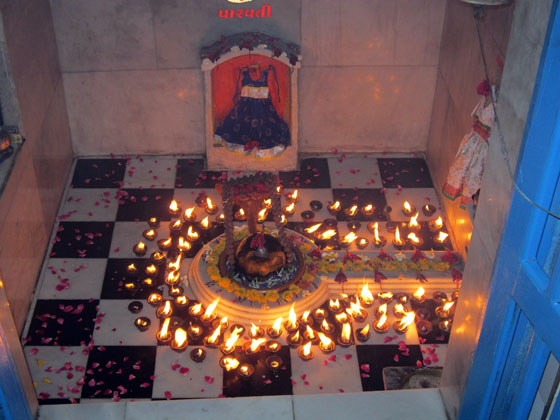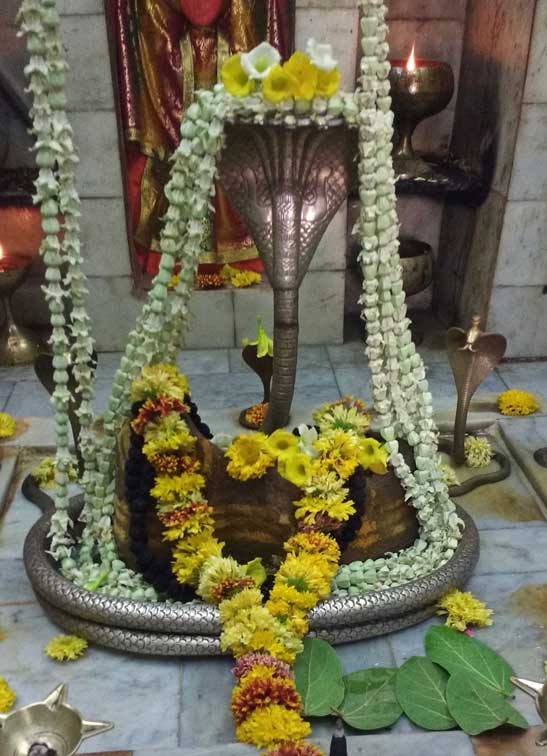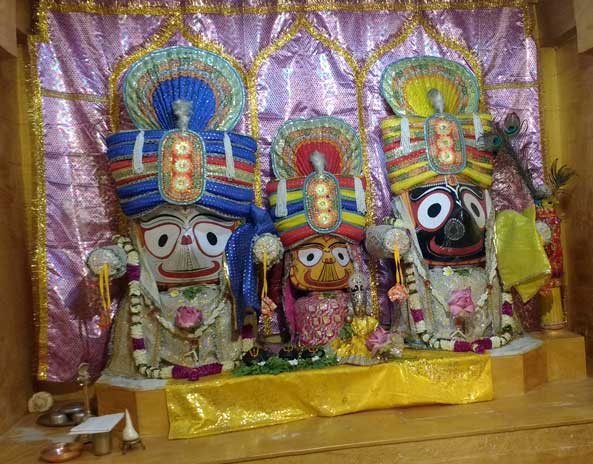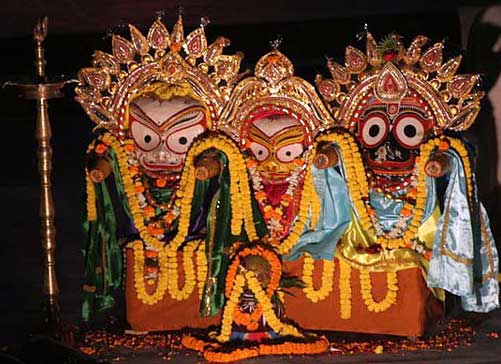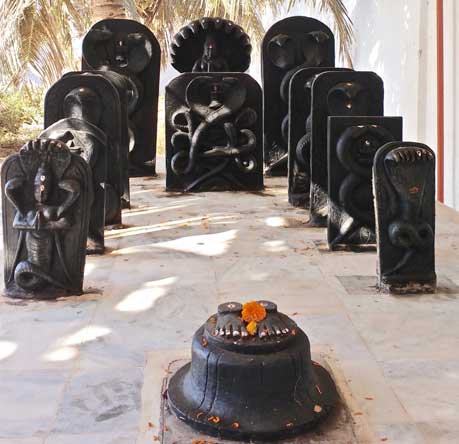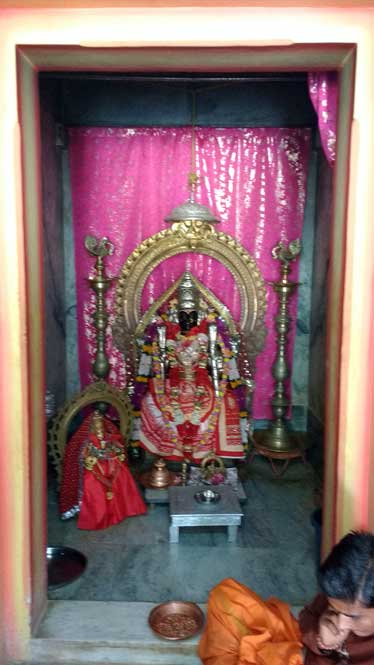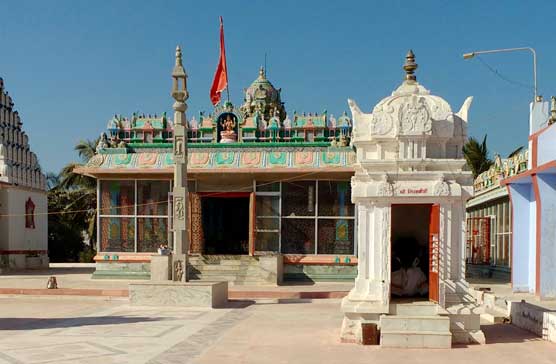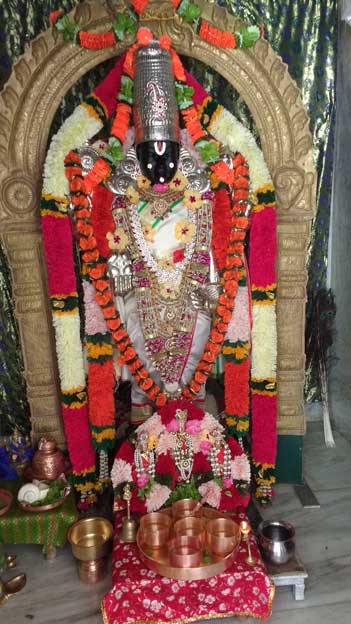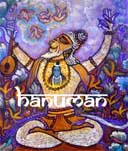Krishna: Myth or Man?
Archeologists Document the Life of Krishna
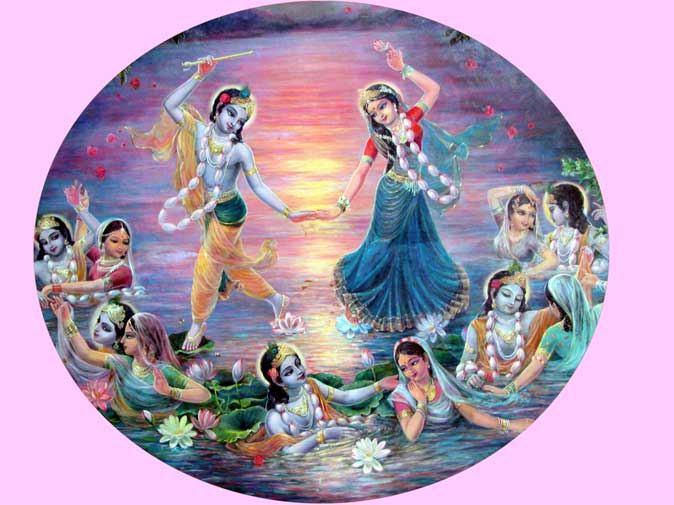
KRISHNA
God and Superman
If
there is one person who has impressed the Indian mind through the
centuries, it is Krishna. He has influenced the course of Indian culture
in all its aspects – religion, philosophy, art, literature and
sculpture. Hindus have always believed in the divinity and historicity
of Krishna even though the British took pains to prove to us that our itihasas (historical books like the Mahabharata and Ramayana) were totally mythological and the characters were the figments of the fertile imagination of both Vyasa and Valmiki.
This was very necessary for them since one of their ambitions was to
replace our culture and gods with the one god of Christianity. Our
history was re-written by them and the children who were taught in
British schools believed that our avatars (incarnations) were only
mythical characters. It is a strange fact of the character of the Hindus
that though outwardly they might profess to believe in the view of
their conquerors they will continue to follow their age old practices.
Almost all the festivals of this country have something to do with Rama
and Krishna and these have been going on through the centuries with
unabated vigor. Maybe this facet of the Hindu character is what has made
us survive the onslaughts of so many foreign invasions. Though we are
willing to give in to other people’s viewpoints, we never let go of our
own and keep on practicing what we have been doing for thousands of
years! It is the tree which is capable of bending that will be able to
sustain a hurricane. Those that stand up straight and tall and refuse to
bend will be battered down!
The multi-faceted personality of Krishna Vaasudeva defies all attempts to cut him down to fit our particular idea of how a human being should behave. He is unique and can never fit into any of the patterns into which we try to mould all human beings. Actually we can say that he belongs to the future even though he lived so many years ago. Modern man has still to reach the heights of intelligence and power that he possessed. This is why he has never been totally understood.
In Krishna we find the picture of a completely evolved human being. He is a unique personality. He shows us that the human being is the greatest of all creations and there is no limit to what he can do if he experiences the source of cosmic power within himself. Krishna accepted no limitations. If anyone can be said to be totally free it is Krishna. He was not bound by any rules of conduct imposed by a mediocre society on those individuals who could not decide or think for themselves. In the galaxy of spiritual luminaries, Krishna is the only one who accepted life in its totality and did not make his followers believe that we are living here only for the sake of going to heaven. He insisted that if there was a heaven it has to be found in this very world. He never offered the uncertain bait of a wonderful life after death for those who lived a pure life on earth. He always encouraged people to rise to the highest within themselves so that they would be able to enjoy this life along with all its dualities and contradictions. He saw life as a drama in which each of us has to play the part we are called upon, to perfection. He was ever an actor on the stage of life, participating in everything with great enthusiasm but always aware of the fact that he was only playing a part! He alone can be called “whole” who is prepared to accept the fact that the “whole” includes all the contradictory parts. There was no ground he did not tread, no point where he faltered and no limit that he did not transcend. This freedom is the fruit of ultimate enlightenment and is available to every human being.
A truly enlightened person should be capable of unreservedly accepting all the dimensions of life. Such a person should be above the dualities of life, like love and hate, sex and chastity, violence and non-violence, war and peace, action and inaction, indulgence and abstinence! Krishna lived in this world of dualities as the lotus leaf in the pond, totally unaffected by the mud from which it has come. This is one of the beautiful illustrations he gives about the state of the enlightened soul in the Sreemad Bhagavad Gita.
Those who read the Bhagavad Gita without understanding this fact about him may be mislead into thinking that Krishna approves of war. He certainly does not support it but neither does he reject it. He accepts it as part of the game of life. He tried his best to dissuade the Kauravas (the opposite faction) from the war but they forcefully resisted his every attempt at reconciliation. As he told his friend Arjuna, though it is good to try and avoid war, yet if it becomes unavoidable it is best to accept it bravely and even joyfully and do our best rather than be a coward and run away from battle.
War and peace are two sides of the coin of life. Warmongers like Genghis Khan, Alexander, Hitler and Mussolini accepted only one side of the coin and believed that war was the only way of life. Pacifists like, Mahavira, Buddha, Gandhi and Christ on the other hand chose the other side of the coin of truth. But every coin has two sides and by denying one side, we will not be able to win the battle of life in which we are faced with conflicting situations every moment of our lives. Krishna is different from both these types. He says that life has to pass through the door of war as well as peace. If someone wants to maintain peace, he needs to have the strength and ability to fight a just war. Whether he wins or loses is immaterial but he should have the moral and physical strength to face it, if called upon to do so.
Even though Christ is the one who told his followers to show the other cheek, the fact is that only the Hindus have ever practiced this so-called virtue. The Christian countries never practiced it and always retaliated when they were faced with enemies! All the great wars of the world starting from the Crusades were fought by Christians. Actually India is the only country which has never invaded another country or started a provocative war! However history has showed us that when faced with a most adharmic (totally negative) situation, we should have the guts to fight if that is the only way we can save our culture.
Goodness suffers from a basic weakness. It tries to avoid any type of conflict regardless of the consequences. For the past few centuries India has been ruled by such “good men” who were responsible for weakening our morale to such an extent that we were continuously battered and bruised by powerful enemies who preyed upon our weakness and plundered and looted and tore us apart.
Krishna is indeed a great mystery and no one has been able to understand him totally. Everyone saw him according to their own spiritual vision. The gopis saw him as the highest expression of love and the yogis as the Absolute Truth. As a warrior he had no parallel, as a statesman he was extremely shrewd, as a teacher he was supreme. There was no one who called to him, whether saint or so-called sinner, in hatred, fear or love who he discarded or avoided. To him everyone was the same but each had to be treated according to their particular characteristic.
He is the divine charioteer seated in the heart of everyone – the Supreme Guru. In and through the redundant details which have woven themselves round his story, it has retained its breathtaking beauty through the centuries for it is dominated by the brilliance of his enchanting personality in which the wisdom of the seer is mingled with the charm and simplicity of a child through which the glory of the divine gushes forth in an inexhaustible fountain of divine love and wisdom.
Jai Sri Krishna!
The multi-faceted personality of Krishna Vaasudeva defies all attempts to cut him down to fit our particular idea of how a human being should behave. He is unique and can never fit into any of the patterns into which we try to mould all human beings. Actually we can say that he belongs to the future even though he lived so many years ago. Modern man has still to reach the heights of intelligence and power that he possessed. This is why he has never been totally understood.
In Krishna we find the picture of a completely evolved human being. He is a unique personality. He shows us that the human being is the greatest of all creations and there is no limit to what he can do if he experiences the source of cosmic power within himself. Krishna accepted no limitations. If anyone can be said to be totally free it is Krishna. He was not bound by any rules of conduct imposed by a mediocre society on those individuals who could not decide or think for themselves. In the galaxy of spiritual luminaries, Krishna is the only one who accepted life in its totality and did not make his followers believe that we are living here only for the sake of going to heaven. He insisted that if there was a heaven it has to be found in this very world. He never offered the uncertain bait of a wonderful life after death for those who lived a pure life on earth. He always encouraged people to rise to the highest within themselves so that they would be able to enjoy this life along with all its dualities and contradictions. He saw life as a drama in which each of us has to play the part we are called upon, to perfection. He was ever an actor on the stage of life, participating in everything with great enthusiasm but always aware of the fact that he was only playing a part! He alone can be called “whole” who is prepared to accept the fact that the “whole” includes all the contradictory parts. There was no ground he did not tread, no point where he faltered and no limit that he did not transcend. This freedom is the fruit of ultimate enlightenment and is available to every human being.
A truly enlightened person should be capable of unreservedly accepting all the dimensions of life. Such a person should be above the dualities of life, like love and hate, sex and chastity, violence and non-violence, war and peace, action and inaction, indulgence and abstinence! Krishna lived in this world of dualities as the lotus leaf in the pond, totally unaffected by the mud from which it has come. This is one of the beautiful illustrations he gives about the state of the enlightened soul in the Sreemad Bhagavad Gita.
Those who read the Bhagavad Gita without understanding this fact about him may be mislead into thinking that Krishna approves of war. He certainly does not support it but neither does he reject it. He accepts it as part of the game of life. He tried his best to dissuade the Kauravas (the opposite faction) from the war but they forcefully resisted his every attempt at reconciliation. As he told his friend Arjuna, though it is good to try and avoid war, yet if it becomes unavoidable it is best to accept it bravely and even joyfully and do our best rather than be a coward and run away from battle.
War and peace are two sides of the coin of life. Warmongers like Genghis Khan, Alexander, Hitler and Mussolini accepted only one side of the coin and believed that war was the only way of life. Pacifists like, Mahavira, Buddha, Gandhi and Christ on the other hand chose the other side of the coin of truth. But every coin has two sides and by denying one side, we will not be able to win the battle of life in which we are faced with conflicting situations every moment of our lives. Krishna is different from both these types. He says that life has to pass through the door of war as well as peace. If someone wants to maintain peace, he needs to have the strength and ability to fight a just war. Whether he wins or loses is immaterial but he should have the moral and physical strength to face it, if called upon to do so.
Even though Christ is the one who told his followers to show the other cheek, the fact is that only the Hindus have ever practiced this so-called virtue. The Christian countries never practiced it and always retaliated when they were faced with enemies! All the great wars of the world starting from the Crusades were fought by Christians. Actually India is the only country which has never invaded another country or started a provocative war! However history has showed us that when faced with a most adharmic (totally negative) situation, we should have the guts to fight if that is the only way we can save our culture.
Goodness suffers from a basic weakness. It tries to avoid any type of conflict regardless of the consequences. For the past few centuries India has been ruled by such “good men” who were responsible for weakening our morale to such an extent that we were continuously battered and bruised by powerful enemies who preyed upon our weakness and plundered and looted and tore us apart.
Krishna is indeed a great mystery and no one has been able to understand him totally. Everyone saw him according to their own spiritual vision. The gopis saw him as the highest expression of love and the yogis as the Absolute Truth. As a warrior he had no parallel, as a statesman he was extremely shrewd, as a teacher he was supreme. There was no one who called to him, whether saint or so-called sinner, in hatred, fear or love who he discarded or avoided. To him everyone was the same but each had to be treated according to their particular characteristic.
He is the divine charioteer seated in the heart of everyone – the Supreme Guru. In and through the redundant details which have woven themselves round his story, it has retained its breathtaking beauty through the centuries for it is dominated by the brilliance of his enchanting personality in which the wisdom of the seer is mingled with the charm and simplicity of a child through which the glory of the divine gushes forth in an inexhaustible fountain of divine love and wisdom.
Jai Sri Krishna!
Dwaraka
Lord Krishna 's Home Discovered
Lord Krishna 's Home Discovered
"The sea, which had been beating against the shores, suddenly broke the boundary that was imposed on it by nature. The sea rushed into the city. It coursed through the streets of the beautiful city. The sea covered up everything in the city. Arjuna saw the beautiful buildings becoming submerged one by one. He took a last look at the mansion of Krishna. In a matter of a few moments it was all over. The sea had now become as placid as a lake. There was no trace of the beautiful city, which had been the favourite haunt of all the Pandavas. Dwarka was just a name; just a memory." – Mausala Parva, Mahabharata.
Hinduism is not a historical religion. If somebody were to prove conclusively that Krishna, Rama and the various gods of the Hindu pantheon never existed, most Hindus would not mind in the least and the religion would continue to flourish as it has done for so many centuries. However to the devotees of Krishna, he is as real as any of their friends or relatives or children depending on how they regard him-as friend, relation, child or lover. This being so, most Indians have not bothered to verify his existence. This itself is very strange since there have been countless devotees of his who have heard the haunting melody of his flute calling to them across the centuries and even seen glimpses of his enchanting form. But this is a failing in the Indian mentality which considers historicity to be of least importance. What is more important to us is the impact that such a being has had on us. Krishna has shaped the trend of our culture, our art, music and sculpture over the centuries and this is enough for us. The very fact that the stories of Krishna have stood the challenge of centuries should have proved to us that such a personality did indeed exist in solid flesh and blood at the time given in our scriptures. The modern mind is the western mind and has a scientific bent and our generation should have tried to price open the veil of the centuries and found out the truth about our favourite god.
But unfortunately the modern educated youth of our country have been fed on a pack of lies which have been given in our history books which have been written by western orientalists with vested interests. Our youth have been brainwashed into believing that our scriptures are all a pack of lies or at best a type of myth and fantasy. However the fact is that our Puranas are true records of our glorious past. When the English first came to India they were shocked to find that if the dates given in our Puranas were true, Indian civilization pre-dated theirs by thousands of years. They refused to accept the fact that a glorious civilization flourished in India at a time when in Europe, they were still scurrying around like barbarians clothed in skins and carrying crude weapons. Thus they labelled as myth all historical evidences in the Hindu scriptures especially in the Puranas.
Brainwashed by the views of the western historians we have forgotten to gaze at our scriptures with an unprejudiced look. If we did so we would realise that Vyasa, the author of the Mahabharata was a contemporary of Lord Krishna and was actually describing events which he had observed himself and in some of which he had played an important part. But unfortunately as I said, our Puranas have never been recognised as a true record of our history by western historians but have been dumped into the category of myth and fantasy. This type of classification had been done by the British colonial scholars who were in reality missionaries who did not want Indian history to clash with the views of the bible. Destroying the historicity of Krishna was an important part of their campaign to establish their own religion in India. To give them their due it might be possible that they did not understand or realise the depth and wisdom which was embedded in the Hindu scriptures. The sad fact is that the Indian historians, who should have known better, blindly copied the facts given by the westerners in their books.
Early western Indologists in their missionary zeal tried to put down the importance of the Vedas as well. They labelled them as primitive mythology. However, many great souls like Schopenhauer in Europe and Emerson in America acclaimed the Vedas as the greatest revelations of divinity known to man. It is said that when Oppenheimer who invented the atomic bomb, watched the explosion, he quoted from the 11th chapter of the Sreemad Bhagavad-Gita. When asked if this was the first ever nuclear explosion he said “yes, in modern times,” meaning to say there were many before that. In fact there is evidence to prove that nuclear weapons were used in the great Mahabharata War.
Another despicable thing done by the western historians in order to belittle the greatness of the Aryan culture was to say that the Aryans were a foreign race who came from outside. Modern archaeologists have proved this to be absolutely false. Archaeology certainly does not support the Aryan invasion theory. Recent independent studies show no evidence of a foreign invasion occurring in India at the dates pointed out by the historians. The river, Saraswathy is described more than 50 times in the Rig Veda. Satellite pictures very clearly show the Saraswathy rising in the Himalayas and going to the Arabian Sea. The drying up, due to many geographical reasons, is also clearly seen in the pictures. The great Vedic culture flourished all along the banks of the River Saraswathy and was essentially a product of the holy soil of India and not an implant from outside. This is clearly shown in the Vedas. Why did those historians not accept the data given in the Vedas instead of going on a trip of their own in order to establish their own views which were certainly not supported by anything in our scriptures and inflict their religion on this country?
Unfortunately our own historians have only copied all the false observations of our own country’s history and these are the views that are being taught to our school children. Brought up on western educational methods and books, our children have been taught to scorn their own religion and doubt the reality of their gods who are the corner stones of our culture.
Luckily this century which is famous for its thirst for investigations, has unearthed many astonishing facts, which will prove, for those who need proof, that our scriptures were absolutely correct in their description of the fabulous city of Dwaraka which was built by Krishna as the stronghold of the Yadavas. It will also prove that Krishna was indeed the superman or supreme incarnation of God as our scriptures declare.
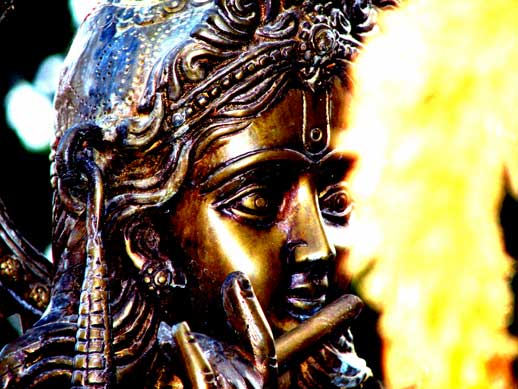
The City of Dwarka had existed
from 32,000 to 9,000 BC.
When the Pandavas heard that Krishna, their friend, God and guide had left this mortal plane, Yudhistira, the eldest Pandava and King of Bharatavarsha (India) sent his brother Arjuna, the middle Pandava to Dwaraka to find out what has happened to the Yadava clan. When Arjuna reached the place he was appalled to find what was happening. The quotation given above is from the Mahabharata and is a first hand account of how Dwaraka went under the sea underArjuna’s very eyes, as prophesied by Lord Krishna.
The modern city of Dwaraka is to be found in Saurashtra and is a great pilgrim centre since our scriptures declare it to be the seat of the Yadava clan and Lord Krishna’s capital. However according to the stories mentioned in many of the Puranas like, the Mahabharata, Harivamsa, Vishnu Purana etc. that fabled city of Dwaraka had been washed away into the sea. Soon after the Lord left his mortal body, the city was washed away as he had predicted, the scene of which has been graphically described above.
In 1983 some excavations were done outside the modern city of Dwaraka, which revealed the existence of a glorious city of ancient times. They found seven temples one on top of the other. The bottom most one was the most interesting since it showed many pottery shards and seals which clearly pointed to the existence of a fantastic city at about the time mentioned in the Mahabharata. These findings encouraged the Marine archaeology centre of the National Institute of Oceanography, to take up a serious work along the coast of the island known as Bet Dwaraka.
The strongest archaeological support for the existence for the legendary city of Dwaraka, comes from the structures discovered in the late 1980s under the seabed off the coast of modern Dwaraka in Gujarat by a team of archaeologists and divers led by Dr S.R. Rao, one of India's most respected archaeologists. An emeritus scientist at the marine archaeology unit of the National Institute of Oceanography, Goa, Rao has excavated a large number of Harappan sites, including the port city of Lothal in Gujarat.

In his book “The Lost City of Dwaraka”, published in 1999, he writes about his undersea findings: “The discovery is an important landmark in the history of India. It has set to rest the doubts expressed by historians about the historicity of the Mahabharata and the very existence of the city of Dwaraka.”
Conducting 12 expeditions during 1983-1990, Rao identified two underwater settlements, one near the present-day Dwaraka and the other off the nearby island of Bet Dwaraka. This tallies with the two Dwarakas mentioned in the epic. These underwater expeditions won Rao the first World Ship Trust Award for Individual Achievement.
Dr Rao is to be congratulated on his efforts in corroborating these truths with evidence that can stand the test of critical analysis and scientific evaluation. He says that further digging and diving, in India’s vast treasure trove of historical facts will further corroborate the key dates of our eventful and glorious past.
Another important find by the divers was a conch seal that established the submerged township's connection with the Dwaraka of the Mahabharata. The seal corroborates the reference made in the ancient text, the Harivamsa that every citizen of Dwaraka had to carry such a seal for purposes of identification. Krishna had declared that only one who carried such a seal could enter the city. A similar seal has been found onshore.
From 1998 to 2001 many underwater explorations were set about which pointed out to a highly civilised city which must have existed at that site, which had great maritime connections with many other countries and which must have been washed away by something like a tsunami or some such hurricane. Dwaraka was a large well- fortified city with an excellent drainage system, massive gates and a wall stretching about hundred eighty miles. It was a sprawling city with gardens and orchards and bastions, with a population of about 10 thousand people. There are many clues which point out to the fact that it must also have been a bustling port. Many ancient anchor stones give ample evidence of this.

All these findings have suddenly roused a lot of interest amongst all Hindus both in India and abroad since it is solid proof of the existence of one of the favourite gods in the Hindu pantheon, namely Lord Krishna.
Around the same time archaeologists from other countries were also busy. Along the coast of the Bay of Cambay and off the coast of modern Dwaraka, they found evidence of a settlement deep under the sea. In seventy feet of water, they found sandstone walls and cobbled streets. Looking up the descriptions of the city of Dwaraka as found in the ancient Hindu scriptures they realised that this must be the remains of the legendary city of Dwaraka ruled by the great God King, Krishna. Wood and pottery chards were found that can be dated back to 32,000 years again proving that the time limits set in ancient Hindu scriptures might be true even though most westerners dismissed it as being absurd. But now with these findings they cannot help but believe, if they want to believe. For many years now western Indologists have shut their eyes to the glory that was ancient India. The city had existed from 32,000 to 9,000 BC. This discovery proves that the life of Krishna is not mere mythology but it is a true, historical record of a towering personality who had lived on this holy land of India.
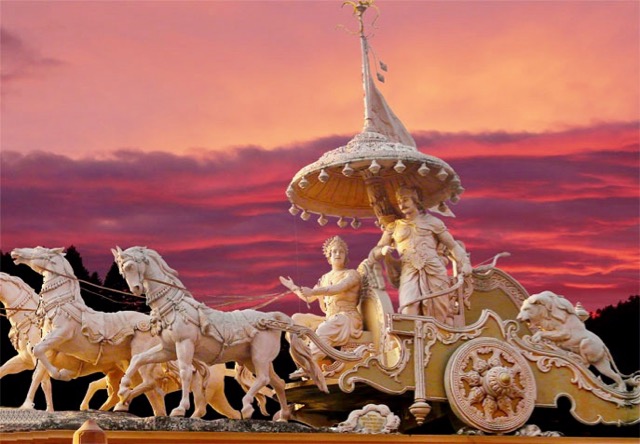
A mighty war between the super human, Krishna
and the alien- Salva...
The west coast of Gujarat was the traditional land of the Yadavas, or Yadus, the clan of Krishna. According to the Bhagavad Purana, Krishna led the Yadavas on a thousand kilometre trek from Mathura, the first capital of the Yadavas towards the west coast of India to establish a magnificent city called Dwaraka, where they could start a new life, safe from their enemies in the Gangetic plain.
The Mahabharata says, Dwaraka was reclaimed from the sea. Rao’s divers discovered that the submerged city's walls were erected on a foundation of boulders, suggesting that the land was indeed reclaimed from the sea. However after its Lord and master left this plane, the sea claimed back the land which had been taken from it. One cannot separate Dwarka from Krishna. If the city existed, then it is true that Krishna also existed.
Dr Narhari Achar, professor of physics at the University of Memphis, Tennessee, has dated the Mahabharata war using astronomy and regular planetarium software. According to his research conducted in 2004-05, the titanic clash between the Pandavas and the Kauravas took place in 3067 BC. Using the same software, Dr Achar places the year of Krishna’s birth at 3112 BC. Actually our Puranas set a far earlier date.
Another very interesting fact found by astronaut technologists is that the war between a king called Salva and Lord Krishna, which is described both in the Mahabharata and the Bhagavad Purana, is actually a description of a war with an extra- terrestrial being.
The Bhagavad Purana says that Salva had done great tapas to Shiva and had been given an aerial vehicle called the Saubha which was as big as a palace and which had miraculous powers like becoming invisible and appearing at different places at the same time. Salva had been itching to get his hands on Dwaraka and when he heard that both Krishna and Balrama were away at Indraprastha, the capital of the Pandavas and only Krishna’s son, Pradyumna was left to guard the city, he decided that this was an opportune moment to attack it. He flew over Dwaraka in the Saubha and destroyed the outer woodlands and gardens. Then he directed his attack against the bastions of the city so that his army which was marching over land could easily penetrate it. Flashes of lightning, hail stones, cyclonic storms and clouds of dust were released from the Saubha which was equipped with all the latest type of weapons! Pradyumna and some of the other sons of Krishna ably defended the city for twenty seven days but were overpowered by Salva’s superior forces.
Lord Krishna heard of the attack and hurried to his son’s rescue and there ensued a mighty war between the super human, Krishna and the alien- Salva. In this Krishna is said to have fired arrows which resembled thunderbolts and balls of lightning and brilliant piercing rays of the sun. The weapons used by Salva makes one suspect that he was using alien technology. His spacecraft made of metal seemed to appear simultaneously at different places like the UFOs. But Lord Krishna retaliated with weapons which had the force of superior spiritual power and Salva who was hard pressed resorted to magic tricks and created the form of Lord Krishna’s father, Vasudeva and proceeded to cut off his head in front of Krishna’s eyes. Krishna faltered for just a moment but then realised that this was another trick of his enemy and very soon he brought the Saubha down with one of his miraculous astras(missiles), charged with the power of potent mantras. But Salva escaped and came to fight with him again in the great Mahabharata war.
Krishna is famous for his lilas or pranks and games. All these centuries he kept his identity a secret and played along with the western historians and allowed people to think that he was only a myth of the febrile imagination of the mighty intellect of Vyasa! But now it looks as if He has decided that this is enough. He has chosen to reveal himself- tear open the veil of maya in which He has shrouded himself and expose the truth of his inspiring life to the public gaze!
It is in view of such great findings that I have ventured to write a new Introduction to Sri Krishna Lila which is being re-printed by Inner Traditions, Vermont, USA. I hope this will bring about a revival of interest in the perennial philosophy of Hinduism and uplift the glory of the supreme incarnation of Lord Krishna.
Hari Aum Tat Sat.
Dwarka: Lord Krishna's Home discovered
Dvaraka Giant Underwater City found in India
Ancient Dwarka Website
